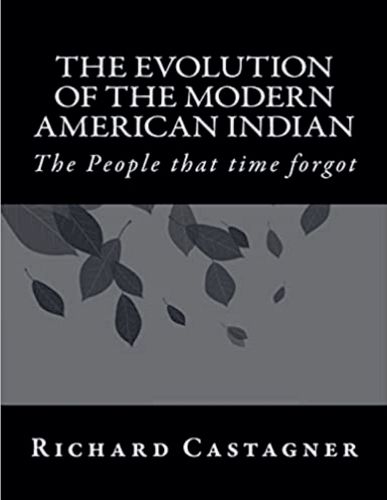Readings Newsletter
Become a Readings Member to make your shopping experience even easier.
Sign in or sign up for free!
You’re not far away from qualifying for FREE standard shipping within Australia
You’ve qualified for FREE standard shipping within Australia
The cart is loading…






This title is printed to order. This book may have been self-published. If so, we cannot guarantee the quality of the content. In the main most books will have gone through the editing process however some may not. We therefore suggest that you be aware of this before ordering this book. If in doubt check either the author or publisher’s details as we are unable to accept any returns unless they are faulty. Please contact us if you have any questions.
History is written by winners-a fact that has been proven in all history books for generations. The fact is that millions of people were already living in North America when Columbus touched shore in 1492 and the true story of these Native Americans in the last 500 years has not been told in many books.
For all the Native American tribe diversity that existed, all the people had much in common. Foremost was a reverence for the harmony of the Creator's works, the web of relationships linking every human to every other human and every human to everything in the natural world: plant, animal, river, lake, mountain, thunderstorm, lightning or the spiritual world. It was a world governed by traditions handed down in rituals, dances, seasonal celebration and in a wealth of stories passed on from generation to generation.
The human spirit is beautiful and stubborn at the same time. Resilient yet bending, the flexibility of American Indians is like river canes in the Muscogee Creek tradition that dwell by the rivers, weathering the most vicious storms but rising back toward the sky when all is done. Like canes, Indians have been able to respond and adjust to new situations, mostly harsh circumstances, and they succeed. This acquired flexibility, called adaptation-essential for survival- enabled tribal leaders and their communities to exercise the powerful dual themes of resilience and rebuilding. After 400 years of colonized suppression, the indigenous responded, but not in the way that those in power thought. Certainly not over night, but within a century's stretch, the Indian Nations arose from the ashes of near ethnic cleansing and third-world neglect.
American Indians were not hapless victims. Instead, they met each challenge with a determination to make it work for them. Often, they succeeded, at least for a while, and even when they failed, they left a legacy of resistance that inspired the next generation.
The Indian Nation is a vibrant part of twenty-first-century American life, not merely as individuals but as citizens of sovereign nations.
In this book, we are beginning the exploration of America's deeper, uncharted history of the American Indian.
Richard Castagner
author
$9.00 standard shipping within Australia
FREE standard shipping within Australia for orders over $100.00
Express & International shipping calculated at checkout
This title is printed to order. This book may have been self-published. If so, we cannot guarantee the quality of the content. In the main most books will have gone through the editing process however some may not. We therefore suggest that you be aware of this before ordering this book. If in doubt check either the author or publisher’s details as we are unable to accept any returns unless they are faulty. Please contact us if you have any questions.
History is written by winners-a fact that has been proven in all history books for generations. The fact is that millions of people were already living in North America when Columbus touched shore in 1492 and the true story of these Native Americans in the last 500 years has not been told in many books.
For all the Native American tribe diversity that existed, all the people had much in common. Foremost was a reverence for the harmony of the Creator's works, the web of relationships linking every human to every other human and every human to everything in the natural world: plant, animal, river, lake, mountain, thunderstorm, lightning or the spiritual world. It was a world governed by traditions handed down in rituals, dances, seasonal celebration and in a wealth of stories passed on from generation to generation.
The human spirit is beautiful and stubborn at the same time. Resilient yet bending, the flexibility of American Indians is like river canes in the Muscogee Creek tradition that dwell by the rivers, weathering the most vicious storms but rising back toward the sky when all is done. Like canes, Indians have been able to respond and adjust to new situations, mostly harsh circumstances, and they succeed. This acquired flexibility, called adaptation-essential for survival- enabled tribal leaders and their communities to exercise the powerful dual themes of resilience and rebuilding. After 400 years of colonized suppression, the indigenous responded, but not in the way that those in power thought. Certainly not over night, but within a century's stretch, the Indian Nations arose from the ashes of near ethnic cleansing and third-world neglect.
American Indians were not hapless victims. Instead, they met each challenge with a determination to make it work for them. Often, they succeeded, at least for a while, and even when they failed, they left a legacy of resistance that inspired the next generation.
The Indian Nation is a vibrant part of twenty-first-century American life, not merely as individuals but as citizens of sovereign nations.
In this book, we are beginning the exploration of America's deeper, uncharted history of the American Indian.
Richard Castagner
author